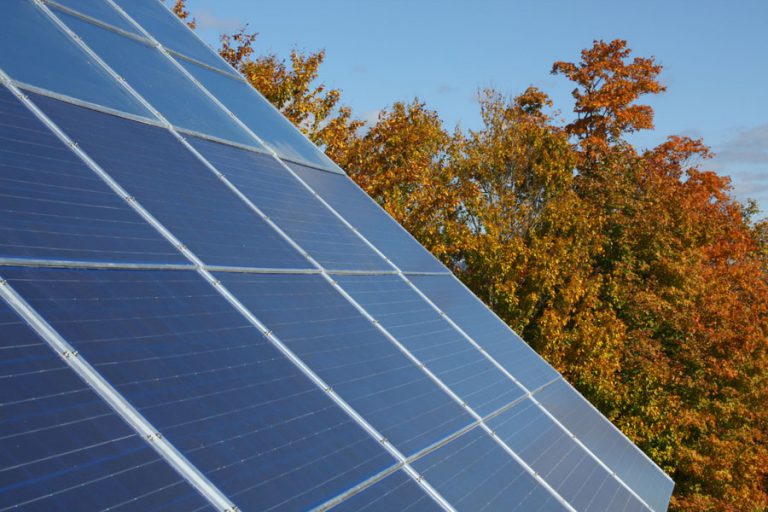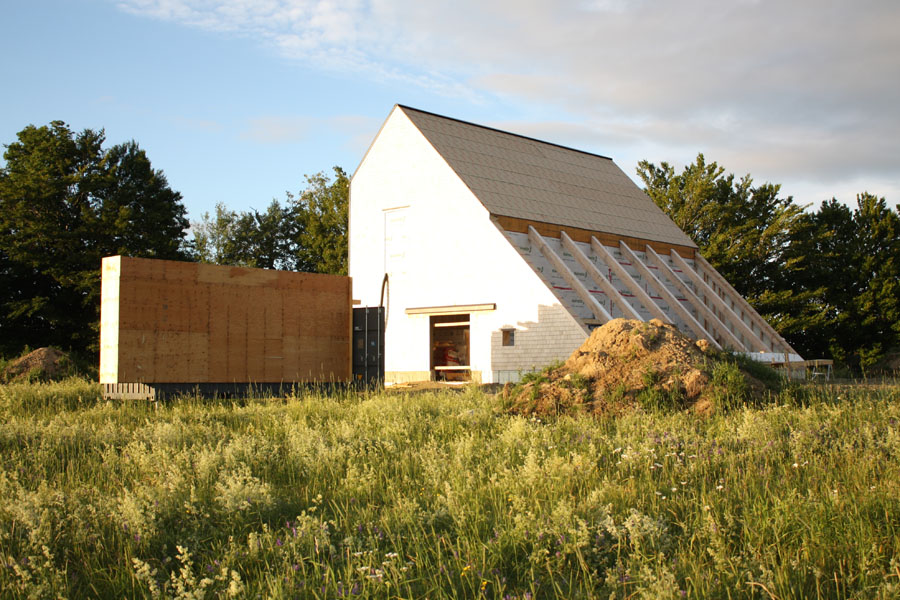Lead Proponent: Montréal ZERO Inc.
Location: Montreal, Quebec
ecoEII Contribution: $ 560,000
Project Total: $ 788,000
Project Background:
A building-integrated photovoltaic-thermal (BIPV-T) collector extracts heat, in addition to electricity, from its PV modules. By actively extracting heat from its modules — and thereby reducing their temperature — a BIPV-T collector reduces temperature-related losses and improves module efficiency. The extracted, supplementary heat is made available to the building for use either directly, if the fluid temperature extracted from the collector is sufficiently high, or through the mediation of a heat pump. In addition, a BIPV-T collector may also incorporate thermal boosters. Thermal boosters are essentially air-based, solar thermal units integrated within the collector, upstream of the PV modules, that give the heat transport fluid an extra temperature boost before it is drawn downstream towards the balance of the BIPV-T system.
In 2007, Montréal ZERO was among twelve winners of Canada Mortgage and Housing Corporation’s EQuilibrium™ Sustainable Housing Demonstration Initiative first call for proposals. The goal of this initiative was to stimulate the construction of twelve net-zero energy demonstration houses throughout Canada. Montréal ZERO built the Alstonvale Net-Zero House in (ANZH) Hudson, Québec. The ANZH featured an intricate yet rather clumsy air-based BIPV-T system consisting of custom-made and off-the-shelf components along with experimental sub-assemblies such as solar, air- thermal-boosters. The difficulties in modelling, designing, procuring, assembling and installing the ANZH BIPV-T system made it very clear that enormous technological gaps had to be resolved for BIPV-T to become feasible. To that end, Montréal ZERO proposed the project “Plug & Play Building-Integrated Photovoltaic and Thermal Technologies” for ecoEII funding. The Project was awarded $560K to develop a BIPV-T collector that is robust, easy to install, appropriate for cold climates, modular, and inherently flexible to accommodate the vagaries of site conditions.
Results

Detail view of roof-mounted BIPV-T collector
The collector, installed on a 45° sloped roof, incorporates both PV modules as well as thermal boosters. This collector is intended to produce all the heat — for space heating and domestic hot water — as well as all the power required by a high-performance house.
Montreal ZERO developed and deployed a prototype plug-and-play, air-based BIPV-T collector for wall as well as roof applications. As of March 2017, the prototype collectors were undergoing performance testing on two off-grid test structures located at the Stornoway Research Centre in Québec - one a wall and the other on a 45° sloped roof. The roof-mounted BIPV-T array was mounted on the main, larger test structure. It was a custom-built structure equipped with an elaborate balance of system prescribed in order to maintain the large greenhouse volume at a minimum temperature of 5°C. The roof-mounted BIPV-T system included 21 PV modules and 14 thermal boosters. All 35 panels (each approximately 1m by 1.6m, and about 20kg) and substrates were installed on the large test structure using a mechanical lift, over three days. For the smaller secondary test structure, a shipping container was modified and equipped with a wall-mounted BIPV-T array, and an experimental BIPV-T-assisted heat pump water heater.
The BIPV-T prototypes use air opposed to liquid as the heat transfer substance. A liquid-based or a high-pressure refrigerant- based BIPV-T collector with its many, unavoidable piping connections is prone to leakage. An air-based system, however, is bulkier than a liquid-based system as it requires air ducts. Moreover, an air-based system is less efficient than a liquid-based system due to the nature of the heat transfer substance. That being said, air-based systems are more forgiving and robust.

Overall view of BIPV-T test structures
The structures incorporate opportunities to test BIPV-T collectors on a vertical wall as well as a 45° sloped roof.
In addition, a purpose-built balance of BIPV-T systems (downstream of the collectors) had to be designed, procured and installed to facilitate the testing of the prototype collectors - a major challenge in the case of the main system connected to the roof-mounted collector. The main and secondary systems were able to independently manipulate their own thermal generation while electrical generation was combined through a single inverter and battery bank.
Benefits to Canada
The Project advanced the development of BIPV-T systems for cold climates. An efficient, effective and affordable BIPV-T energy system that can provide all the heat — for space heating and domestic hot water — and all the power required by a high-performance house has the potential to become the holy grail of the net zero and low energy housing industry in Canada.
Next Steps
Continue to monitor and evaluate the performance of the prototype systems. Further streamline the balance of BIPV-T system to simplify and improve its robustness. Deploy the BIPV-T collector along with its optimized balance of system on a small, test house and monitor its performance.